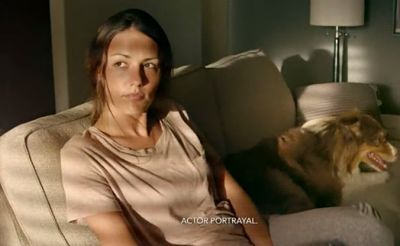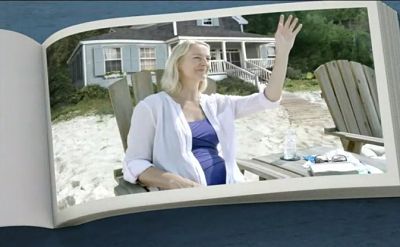Article
10 Most-Advertised Brand-Name Drugs
Author(s):
Drug manufacturers spent $3.4 billion on advertising the top 10 brand-name prescription drugs last year.
Drug manufacturers spent $3.4 billion on advertising the top 10 brand-name prescription drugs last year.
This top spending comprised 75% of all pharmaceutical ad spending in 2014, according to Nielsen data.
Pfizer alone spends more than $1 billion on direct-to-consumer (DTC) advertising annually, so it is unsurprising that medications it markets dominate the following list of the 10 most-advertised brand-name drugs:
1. Cialis ($248.7 million spent on advertising)

Eli Lilly’s spending on TV advertisements for this erectile dysfunction (ED) drug increased 15% from its ad spending from 2013.
The ads’ signature theme spotlights the importance of women in men’s lives. Taglines such as “She reminds you every day” and “She’s still the one for you” help Cialis (tadalafil) appeal to both men and women.
Cialis faces patent expiration in both the United States and Europe in 2017, but Lilly has already forged a deal with Sanofi to make Cialis available OTC by that time.
2. Lyrica ($228.9 million spent on advertising)

Pfizer’s total ad spending for Lyrica (pregabalin) in 2014 was split evenly between the drug’s 2 indications: fibromyalgia ($123.1 million) and diabetic neuropathy ($105.7 million).
Lyrica is a preferred non-opioid option for both nociceptive and neuropathic pain patients.
The drug generated $5.2 billion in sales last year and is ranked last on the top 10 list of best-selling brand-name drugs so far in 2015.
3. Eliquis ($219 million spent on advertising)

Bristol-Myers Squibb (BMS) and Pfizer’s Eliquis (apixaban) is one of the last entrants to the new oral anticoagulants (NOAC) class.
Eliquis was originally approved to reduce the risk of stroke and systemic embolism in patients with nonvalvular atrial fibrillation, though it received additional indications in 2014 to treat deep vein thrombosis and pulmonary embolism.
The majority of the $219 million spent on advertising Eliquis was directed toward TV spots focused squarely on discrediting the older-generation blood thinner warfarin.
Despite being touted as a more reliable blood thinner, Eliquis shares some black-box warnings with other NOAC drugs.
4. Viagra ($211 million spent on advertising)

Viagra is the second erectile dysfunction (ED) drug listed in last year’s top 10 ad spenders.
Pfizer’s $211 million Viagra campaign in 2014 departed from its traditional strategy of a male spokesman promoting the drug to a female spokesperson.
In one such ad, the woman said, “You know, plenty of guys have this issue—not just getting an erection, but keeping it.”
Advertising spending for the ED drug may need to be scaled up next year, since CVS Caremark has opted to exclude Viagra from its 2016 formulary.
5. Humira ($203.2 million spent on advertising)

Of AbbVie’s total advertisement spending on Humira in 2014, $119.9 million was directed toward arthritis, while the remaining $83.3 million was spent on psoriasis.
Humira is 1 of just 3 drugs in the top 10 that saw decreased ad spending between 2013 and 2014.
In the first half of 2015, Humira was the top-prescribed drug in the United States with 2.2 million total prescriptions written. The drug faces patent expiration in 2016.
6. Latuda ($179.1 million spent on advertising)

Sunovion aggressively promoted Latuvia (lurasidone HCl) in 2014 for the drug’s newer indication to treat bipolar depression.
The manufacturer spent $179.1 million on TV spots and print ads in both health publications and mainstream magazines. The 2014 campaign targeted younger women and featured young actresses enjoying normal life.
This was the first time Latuda broke into the top 10 most advertised drugs since its FDA approval in 2010.
7. Xeljanz ($160.7 million spent on advertising)

Pfizer targeted its advertising for Xeljanz as a rheumatoid arthritis (RA) treatment.
Earlier this year, the FDA accepted to review Xeljanz as a potential treatment for adult psoriasis. It is also reviewing a once-daily formulation of Xeljanz for RA.
8. Celebrex ($118.9 million spent on advertising)

Celebrex (celecoxib) took a big hit in sales when competitors like Actavis, Mylan, and Teva launched their own generic versions of the arthritis and pain management treatment in December 2014.
Pfizer’s advertising spending for Celebrex in 2014 dropped 21% from its 2013 allocation. The company hasn’t aired a single TV spot for Celebrex since September 2014.
9. Abilify ($107.9 million spent on advertising)

Bristol-Myers Squibb (BMS) and Otsuka collectively spent $107.9 million on advertising their schizophrenia and bipolar disorder treatment, Abilify, which accounted for 12.6% and 40% of BMS’s and Otsuka’s 2014 sales, respectively.
The FDA approved the first generic versions of Abilify (aripiprazole) in April 2015. Despite the loss of patent protection, 8.3 million total prescriptions were written for Abilify in the first half of 2015.
Abilify is ranked No. 2 on the top 10 list of best-selling brand-name drugs for 2015.
10. Chantix ($103.1 million spent on advertising)

Pfizer’s ad spending in 2014 on its smoking cessation agent Chantix (varenicline) increased 30% from 2013.
In March 2015, the FDA updated Chantix’s label to reflect warnings about potential alcohol interaction and rare seizure risks.
Nielsen’s data did not include Internet advertising, but Kantar Media totaled digital advertising at $246 million in 2014. Kantar ranked Cialis ($272 million), Humira ($259 million), Lyrica ($246 million), Viagra ($232 million), and Eliquis ($221 million) as the top 5 brand-name drug ad spenders, respectively.





